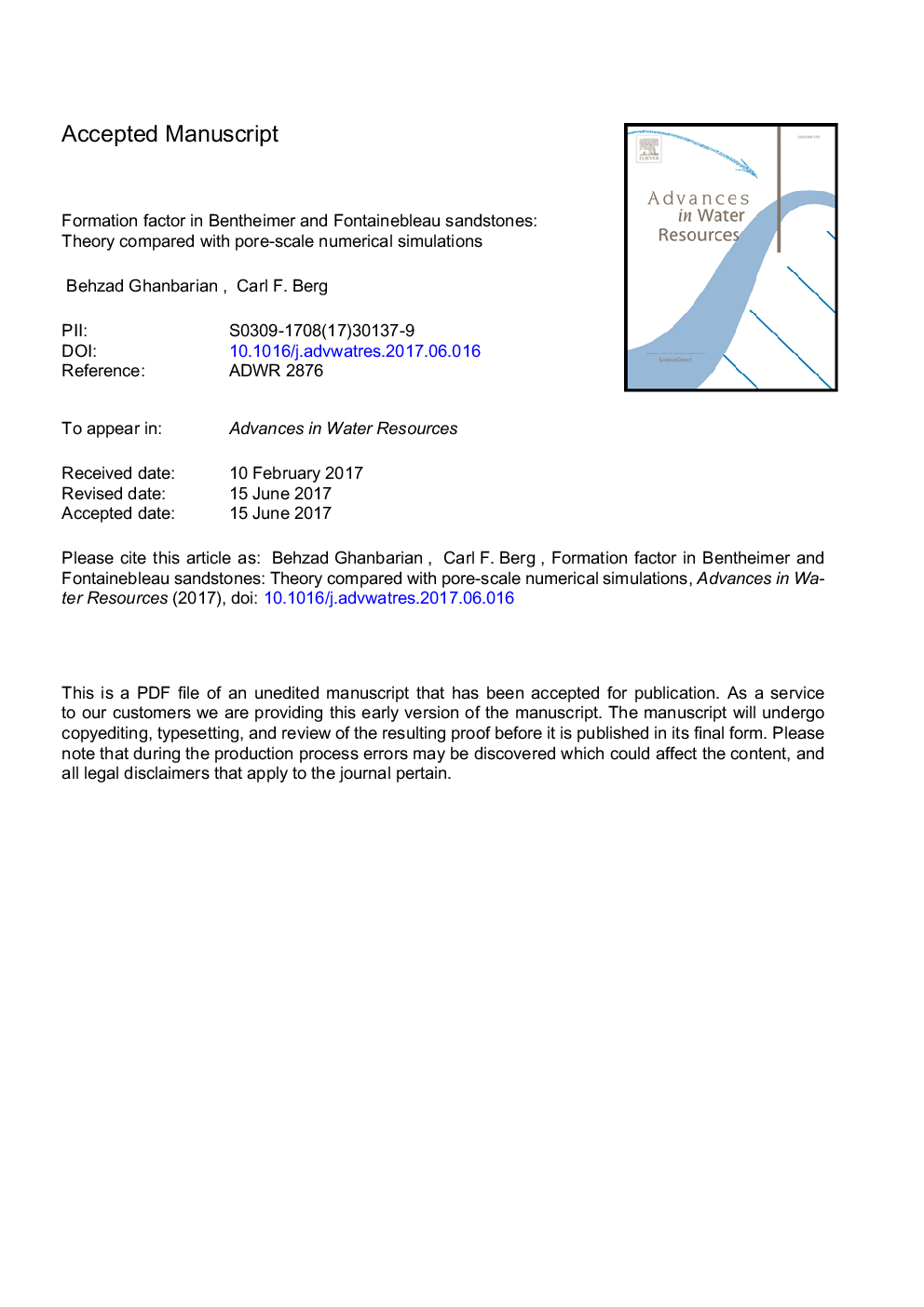| Article ID | Journal | Published Year | Pages | File Type |
|---|---|---|---|---|
| 5763735 | Advances in Water Resources | 2017 | 36 Pages |
Abstract
Accurate quantification of formation resistivity factor F (also called formation factor) provides useful insight into connectivity and pore space topology in fully saturated porous media. In particular the formation factor has been extensively used to estimate permeability in reservoir rocks. One of the widely applied models to estimate F is Archie's law (F = Ï â m in which Ï is total porosity and m is cementation exponent) that is known to be valid in rocks with negligible clay content, such as clean sandstones. In this study we compare formation factors determined by percolation and effective-medium theories as well as Archie's law with numerical simulations of electrical resistivity on digital rock models. These digital models represent Bentheimer and Fontainebleau sandstones and are derived either by reconstruction or directly from micro-tomographic images. Results show that the universal quadratic power law from percolation theory accurately estimates the calculated formation factor values in network models over the entire range of porosity. However, it crosses over to the linear scaling from the effective-medium approximation at the porosity of 0.75 in grid models. We also show that the effect of critical porosity, disregarded in Archie's law, is nontrivial, and the Archie model inaccurately estimates the formation factor in low-porosity homogeneous sandstones.
Related Topics
Physical Sciences and Engineering
Earth and Planetary Sciences
Earth-Surface Processes
Authors
Behzad Ghanbarian, Carl F. Berg,
